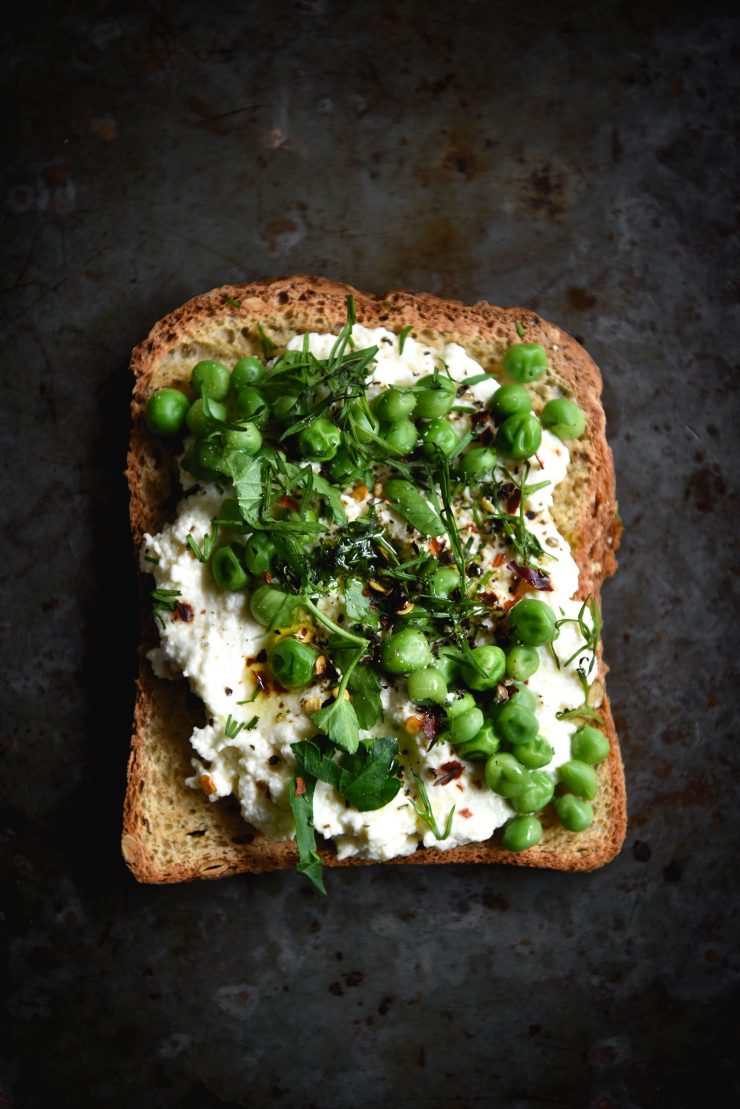
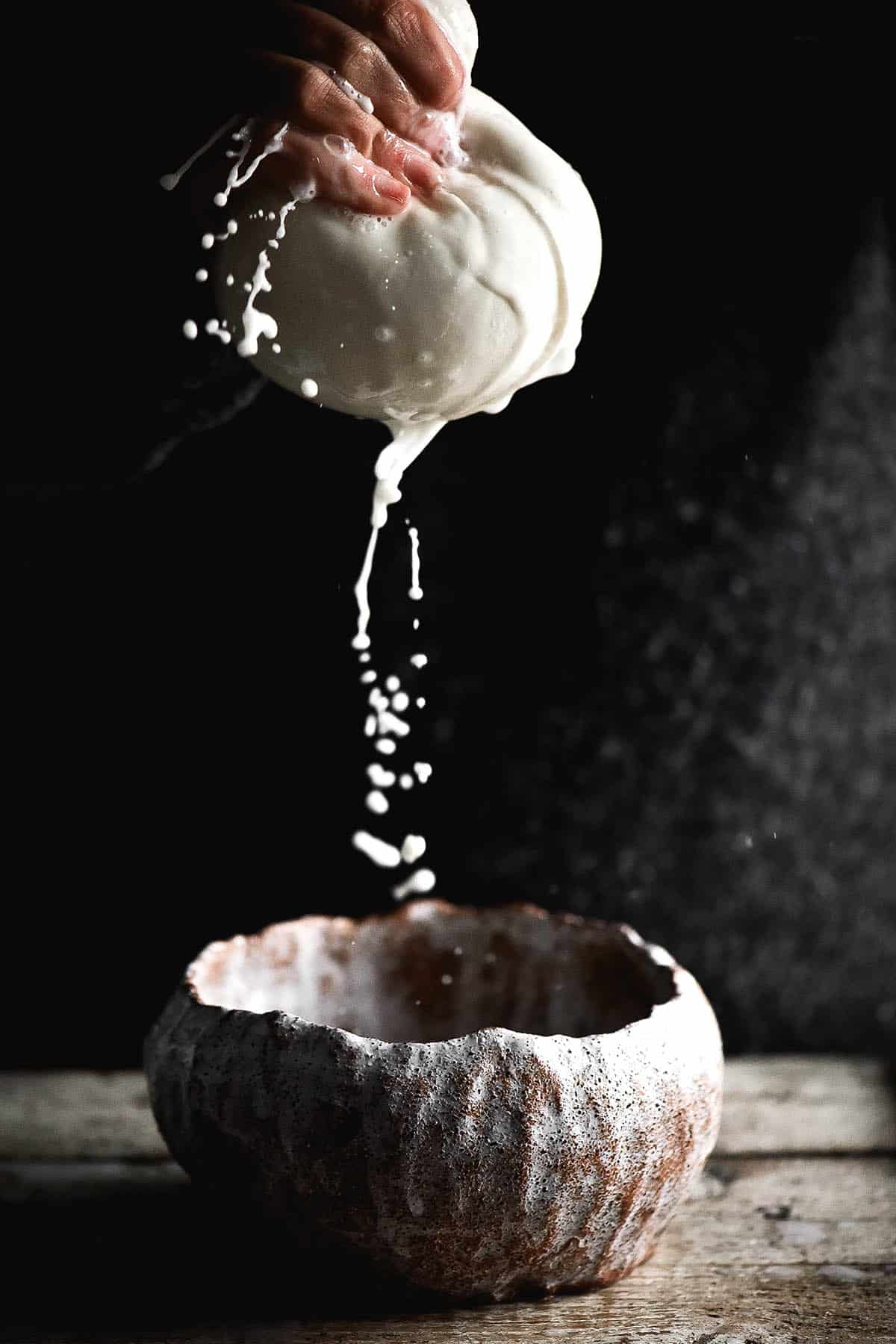
I only recommend products I use daily and all opinions are my own. This post contains affiliate links, and I earn a small commission for any qualifying purchases made through the link, at no extra cost to you.
Lactose free ricotta recipe
Ah ricotta. We have a mostly love but a little bit of hate relationship, don’t we? While my somewhat severe lactose intolerance seems to have mostly disappeared with age, my disagreement with an excess of especially milky foods remains. Which is why I have developed this super simple, speedy and cheaty lactose free ricotta recipe for you. If you don’t have access to lactose free milk, I have a recipe here.
Through the years, I have been relatively restrained in using ricotta in my recipes. This is an unfortunate and direct result of ricotta’s relatively high lactose content. I have dabbled with using it in my involtini recipe from my first cookbook and in the zucchini ricotta tart.
Now? No restraint necessary! We can (collectively) eat ricotta style cheese with reckless abandon. My suggestions for your first foray? On a nice gluten free sourdough or mixed into a FODMAP friendly pesto pasta. Or, you know, either of the subtly linked recipes above.
Note that a lot of easy ricotta recipes rely on both full cream and a thermometer, whereas this recipe has neither. I wanted to make it as simple and accessible as possible, and I have found that it can quite easily be made without either. If you’d like to try with one or both of these elements, see my ricotta making links below.
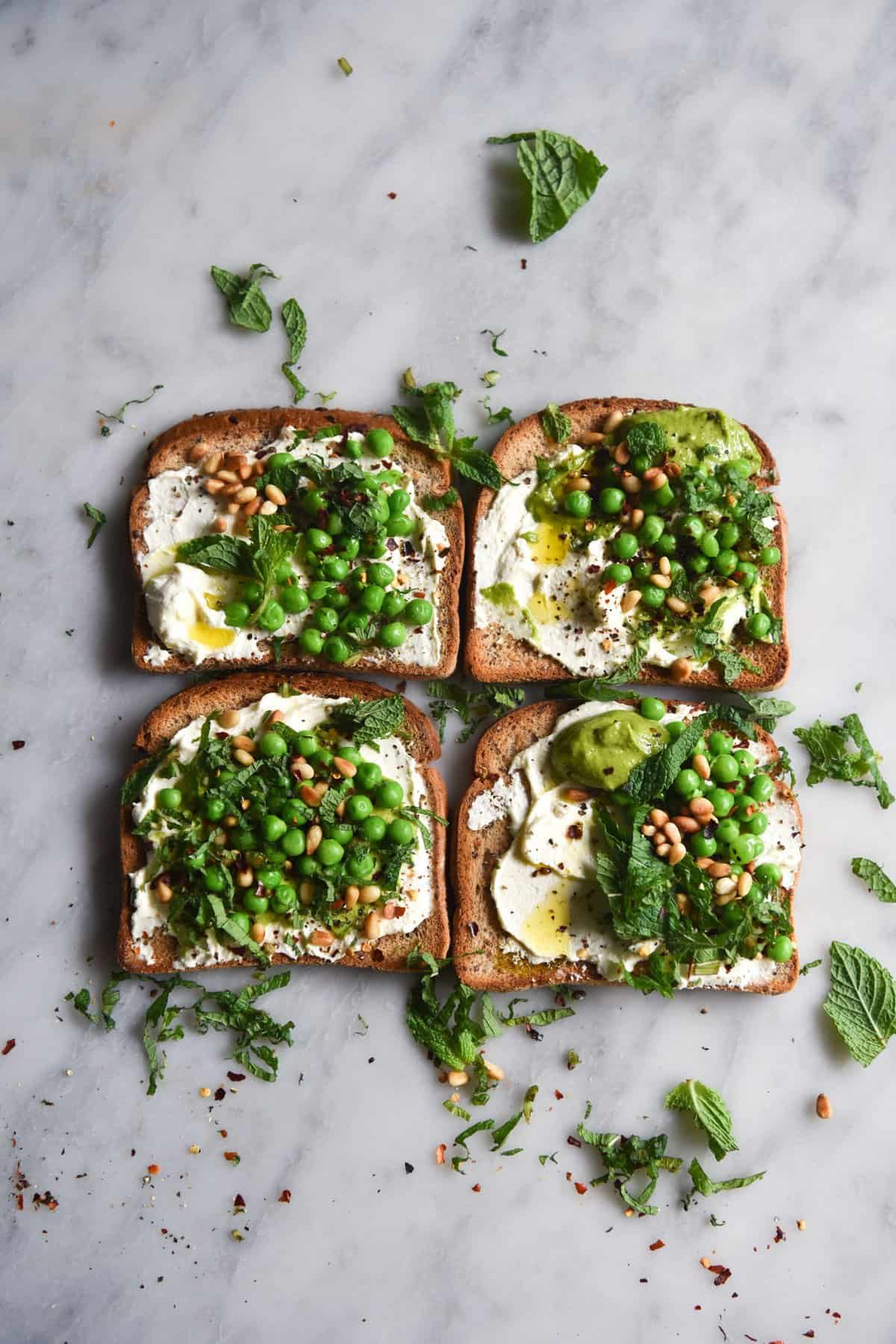
Recipe notes for your lactose free ricotta
Ricotta is traditionally made using the whey leftover from making cheese, which is then mixed with an acidic component to form ricotta. Here, we’re using Lactose Free Full Cream milk to create a quick and easy lactose free ricotta style cheese.
Ricotta is quite a high lactose and FODMAP cheese, so this version is a great alternative for those with a lactose intolerance or on a FODMAP diet.
The ricotta can be flavoured with whatever you fancy – herbs, a bit of balsamic, truffle oil or a smoked salt. It is also delicious plain.
How much you drain the ricotta is up to you. If you prefer a runnier ricotta, you don’t even need to leave it to drain – simply give it a good squeeze in the muslin cloth or nut milk bag and decant into an airtight container. If you prefer a drier ricotta, leave it to drain for 30 minutes or longer.
The same goes with salt – salt the ricotta according to your taste after you have drained it. The amount listed in the recipe is a suggestion and the salinity level that I prefer.
You can use the leftover acidic liquid in smoothies, pizza bases, curries – basically any cooking process that requires liquid. You can also use it for a handy pre-salted and pre-flavoured water to boil pasta in. It adds a unique tang and a bunch of nutrients from the milk.
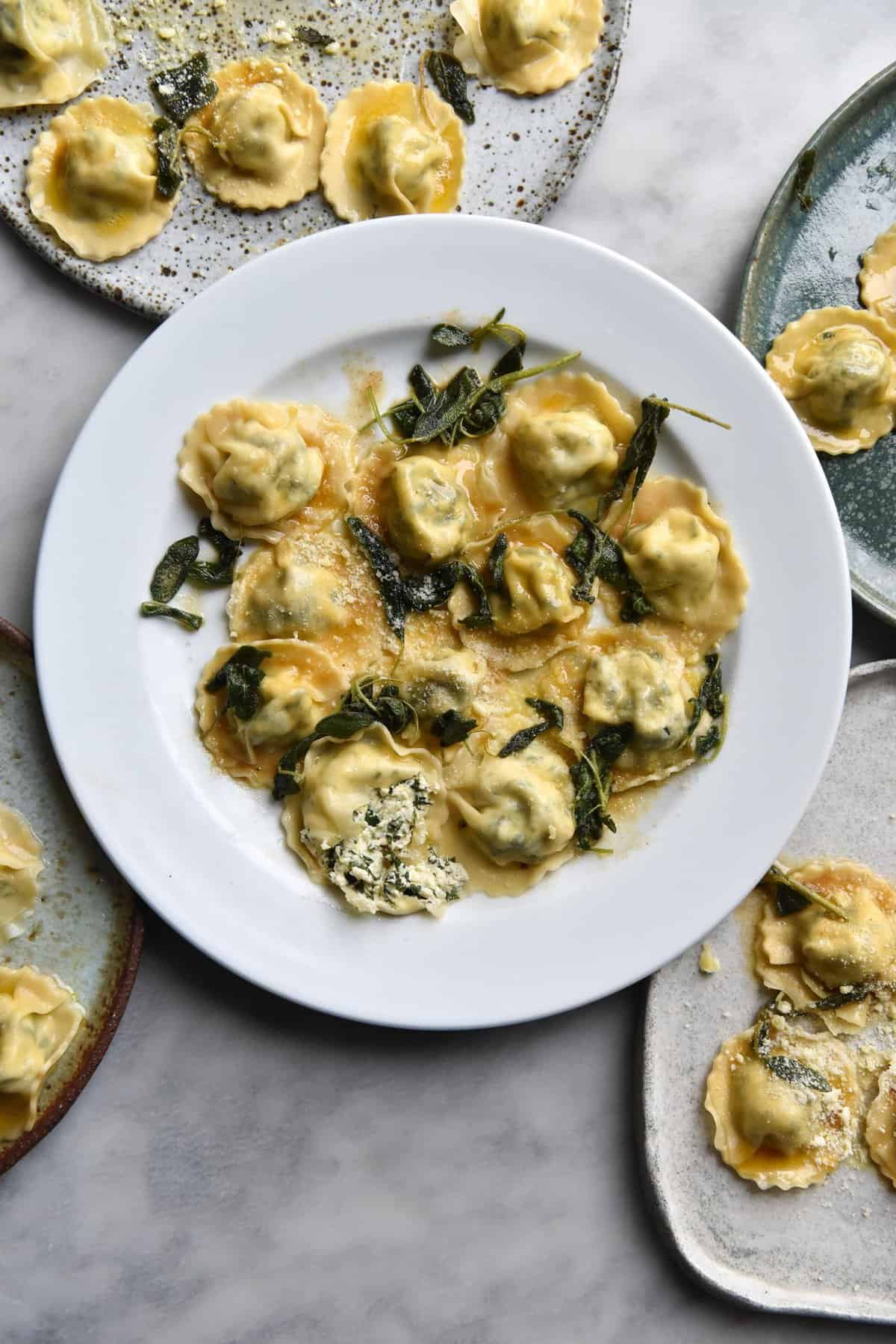
How to make lactose free ricotta
Lactose free ricotta is very easy to make. You only need a couple of things:
- Full cream lactose free milk or regular full cream milk and lactase drops
- Some white vinegar or lemon juice
- A nut milk bag or muslin cloth
- A large pot and a bit of patience!
To make this lactose free ricotta, bring your lactose free milk to a simmer over a really low heat. Traditionally, ricotta is a bit more of an involved process, but this is a simple home version. It doesn’t require a thermometer, but I recommend a Thermapen if you’re looking to invest (I’m obsessed with mine).
Once the milk is simmering, add the vinegar or lemon juice. This acid will coagulate the milk, forming curds (our ricotta) and whey. The curds should be white and cloud like and the whey should be a translucent yellow colour. If the whey is still milky white, continue to gently cook and stir until it changes.
Once the ricotta has coagulated, leave it to sit for 10 minutes off the heat. Strain the ricotta through the nut milk bag. You can keep the whey for other uses or you can strain it off.
Allow the ricotta to strain in the nut milk bag for anywhere from 10 minutes to an hour, depending on the texture you like. Once strained, add salt to taste and store in an airtight container.
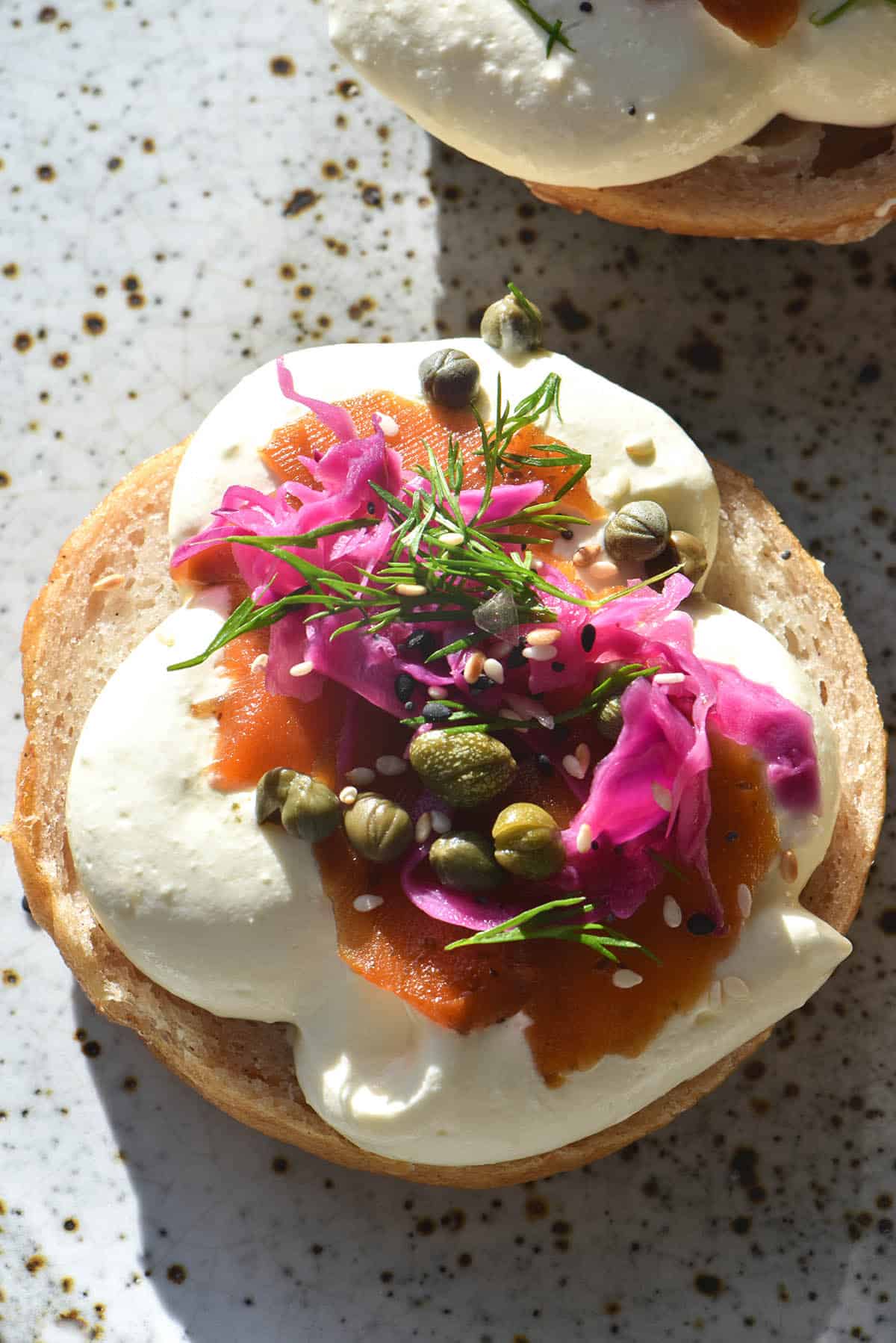
I can’t find lactose free milk where I live. What can I use?
It is possible to make your own lactose free milk at home using regular milk and lactase. I have written an extensive post on it here. Lactase is the enzyme that breaks down lactose. By adding lactase to your milk, you are breaking down the lactose content of said milk.
This is how commercial lactose free milk is made, so the milk will be no different than the variety bought at the store. Choose a good quality, fresh and local milk for the tastiest results. I have seen some people use soy milk in a similar manner, but I haven’t tested it. So, I don’t have a vegan alternative at the moment.
How long does the ricotta last? Can it be frozen?
How long the ricotta lasts will depend on the milk you used to make it. A ricotta made with an older milk will expire more quickly than one made with fresh milk. I find that ricotta made with fresh milk lasts for 3-4 days, maybe more. With that said, I generally endeavour to eat it within a few days.
This ricotta can successfully be frozen and defrosted, if you have leftovers. In my experience, however, it tends to make the texture grittier. I wouldn’t recommend using defrosted ricotta in something where the ricotta is the star. If it is to be cooked or is simply the dairy component of a larger dish (like a ricotta cake) it should be fine.
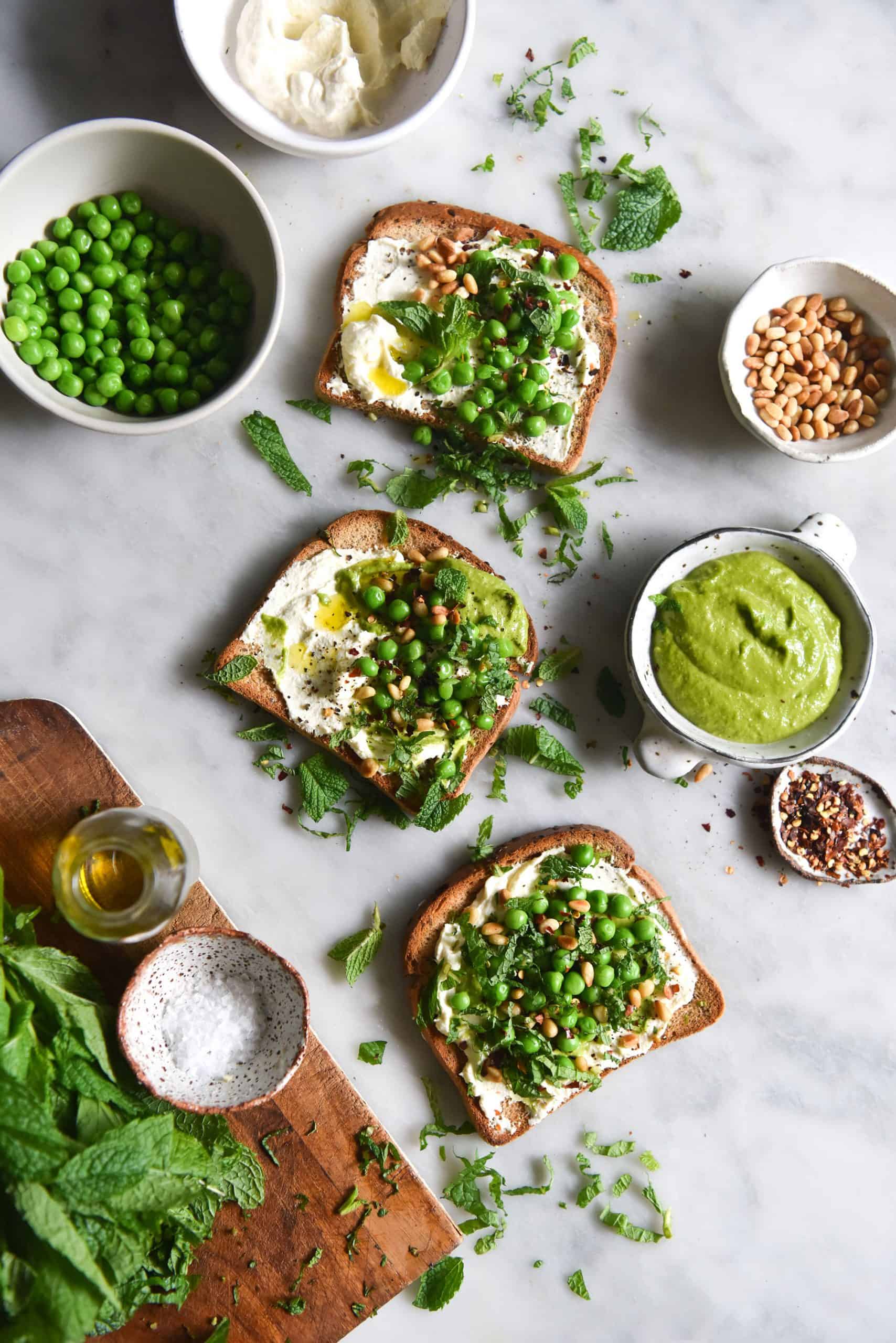
Ricotta making links
- This recipe from Gourmet Traveller is a little more advanced, for the ricotta connoisseur. Just make sure you use lactose free milk and cream if you need to.
- This ‘It’s Alive’ tutorial with Brad on making ricotta. Any excuse to link an It’s Alive episode.
My lactose free dairy recipes
- Lactose free milk
- Lactose free mascarpone
- A homemade cottage cheese that is lactose free
- Lactose free paneer
- Homemade lactose free condensed milk

My recipes that use lactose free ‘ricotta’
- A cute favourite, my zucchini spiral tart with a herbed ricotta filling
- This delightful summer tomato and whipped lemon ricotta salad
- A roasted capsicum, gluten free sourdough crouton and ricotta side dish
- Homemade gluten free ravioli
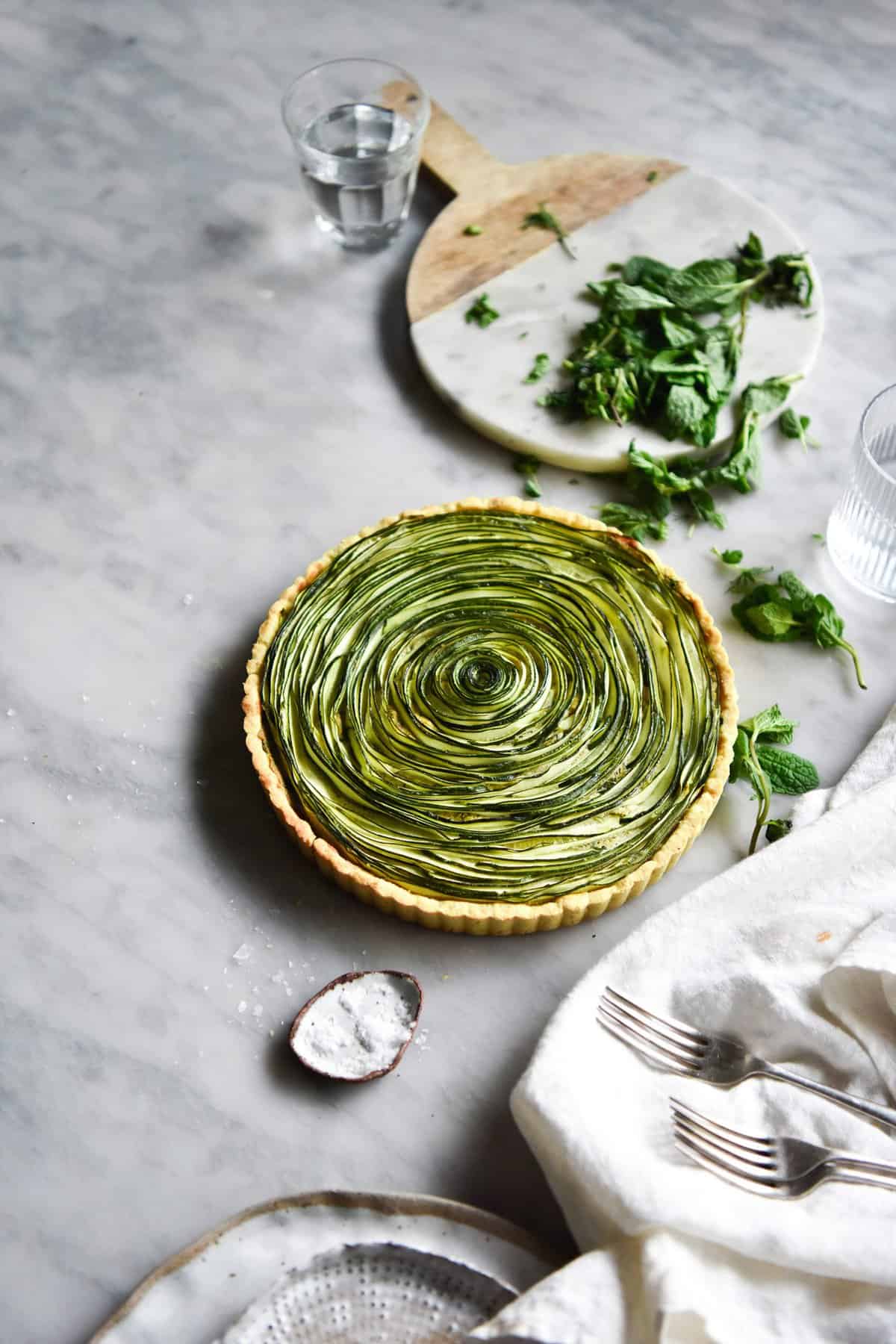
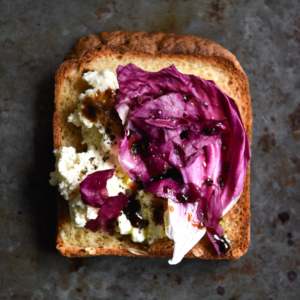
Lactose free ‘ricotta’
Ingredients
- 1 litre full cream lactose free milk
- 1/4 cup (60ml) lemon juice (you can also use white vinegar or apple cider vinegar but they will leave more of an aftertaste than lemon juice
- 1 teaspoon fine salt or to taste
Instructions
- Place the milk and salt in a large saucepan over a low-medium heat. Allow the milk to come to a simmer – about 10-15 minutes.
- Once the milk is gently bubbling, turn the heat off and remove from the heat and the stove. Add the lemon juice. Stir gently, only just to distribute the acid in the milk. Allow to sit for 15 minutes – the mixture should have curdled and become obvious ‘curds and whey.’ There should be ricotta like lumps of milk and a semi-transparent lemon coloured liquid.
- If the liquid is still milky and completely opaque, return the ricotta to a gentle heat until it begins to separate, and then take it off the heat again. You can add a little extra acid (a teaspoon at a time) as an insurance policy, although this might affect the taste of the final product.
- Once you have left the mixture to sit for 15 minutes, the mixture should have obviously separated into the two distinct elements. Gently pour the ricotta through a sieve lined with muslin cloth or a nut milk bag. You can discard the whey or use it in smoothies or baking – see notes for a few more ideas.
- How long you strain the ricotta is up to you – it depends on how runny you like your ricotta. I like mine on the more spreadable side, so I either give mine a good old squeeze and decant, or strain mine for a maximum of around 20 minutes. Anywhere from 20 minutes to 1 hour is a good ballpark. If you accidentally overstrain, you can add a little lactose free milk to loosen it up.
- Check for seasoning and store in an airtight container. Keeps for a few days in the fridge.
- To make a delicious spreadable whipped ricotta, simply pop the ricotta in your stand mixer and whisk until it is light and fluffy. You can also use a hand beater and add in any flavourings you see fit.

Thank you! Do you do anything with the whey?
Hi Tanya, there’s a little dot point in the recipe notes about the whey and where you can use it. Most recently I have been tinkering with adding it to sourdough bread but I don’t have any recipes with whey in the pipeline if that’s what you mean 🙂
Love your charming post, especially the part about having a love /hate relation with Ricotta. Sad but true for me as well. I am happy to know that lactose free whole milk works as well as regular milk. I appreciate your mention of fodmaps. So few websites know how helpful the fodmap app is for folks with IBS who often are lactose intolerant. Love your blog and I plan to visit again. Right now I am recovering from Diverticulitis-IBS folk are often prone to it), which means I can’t have the pizza rustica I am making for my family, but if I make it lactose free. both ricotta filling and the pie crust, maybe I can have just a bite. lol.
Glad to hear you enjoyed it Joan! I love the FODMAP app, totally invaluable for people like us. I’m sorry to hear you’ve been unwell and I wish you a speedy recovery! My dad gets diverticulitis so I know just how nasty it can be xx
Can you freeze any left overs? Would it defrost okay to use in something like stuffed pasta shells?
I’ve frozen it before and I found that it works, it just defrosts a little more grainy than when fresh. In something like pasta shells I doubt you would notice that though. If it’s looking a little chunky and grainy defrosted, maybe add a touch of milk to soften the edges 🙂
Hello Georgia, im going through a fair bit at the moment with food sensitivities giving me hives and rashes including salicylates.Lemon juice is high in salicylates and I was wondering if I could substitute the lemon juice with citric acid ? I’m hoping it would produce the same result ? I may just have to try it I think to see for myself….thankyou for the recipe !!
Hi Katie! Sorry to hear you’re going through that. To be honest I haven’t tried it, but I did do a quick google and found this epicurous article: https://www.epicurious.com/expert-advice/cooking-with-citric-acid-tips-and-tricks-canning-preserving-seasoning-article
It says you should be able to use citric acid dissolved in water in place of the lemon juice for ricotta. They say 1/2 teaspoon dissolved in 2 tablespoons of water, although they don’t specify how much milk that is for, so you might have to do a bit of experimenting. Easy enough – if the milk doesn’t curdle, just add a little more. Let me know how you go with it!
Thankyou so much Georgia, I’ll let you know how it goes.
Wow. Such a simple recipe and such a lovely ricotta. I had no idea it could be that simple and taste so fresh . It’s now in my personal recipe favourites.
It worked Georgia !! I went by the article you sent but doubled the water, so i used 4 tablespoons which is a quarter of a cup of water and 1/2 teaspooncitric acid….thanks for this recipe and the help georgia?
I’m so glad it worked for you Katie! Thanks so much for letting me know 🙂
Would this work for sweet recipes also? Should I omit the salt? Looking forward to trying it out – thank you
Hi Lara! Yes, this will also work for sweet recipes. I wouldn’t omit the salt as it gives the ricotta flavour, and all store bought ricotta (including the ones we’ve all previously used in sweet dishes) contain salt. Keep in mind, too, that a lot of that salt is drained off at the end, so it’s not a super salty end product. I would suggest adding maybe 1/4 teaspoon of salt in with the milk, and then perhaps another 1/4 teaspoon at the end if you deem it necessary. Let me know how you go with it!
Thank you so much 🙂
Thank you! My son is lactose intolerant and loves lasagna! I really appreciate finding this recipe!
Does anyone know if this works with a lactose free ultra filtered milk? They generally have some sugar removed and extra protein added.
When you say “full cream lactose free milk”, does that mean “whole milk” (i.e. 3.25% milk fat) or is it lactose free cream (i.e. 33% milk fat). I’m assuming you mean cream, not milk, in order to get to a ricotta cheese but I don’t like to assume (you know the old saying about assuming!).
Thank you! I’ve found a number of lactose free substitutes for dairy products in stores these days (cheddar, sour cream, cream cheese) but never ricotta and there are a couple of recipes I like to make with ricotta which has had me stymied for a solution. I’d love to try making this. Thanks again. 🙂
Hi Gwen! Sorry for my slow reply, I am currently on holiday in the USA! Full cream lactose free milk (not cream) is used for ricotta. You can add some cream for extra richness if you like (maybe 100-250ml) but milk should form the majority of the liquid. Hope this helps!
Hi, I am so excited to have found your site!!!
I just wanted to let you know that your Thermapen link needs a bit of help. It is actually tracking to your Nut Milk Bags Amazon link.
Hahaha thank you for letting me know Amy! Classic me 🙂
I am sensitive even to lactose free milk . Can I use almond, soy or plant cream as a substitute ?
Hi Dianne! Unfortunately it’s the protein in dairy milk specifically that coagulates to form ricotta, so a plant milk won’t work here. There are lots of vegan ricotta recipes online and they generally use nuts or tofu blended up to form a ricotta. I’d recommend seeing if any of those recipes work for you 🙂
Hi! This is a GREAT find for me, as my 95 year old mom is recently lactose intolerant ( and very salt restricted) and we are trying to make as many of her favorite things for her as low salt and lactose free. Until I saw this post, I had no hope!!
Have you ever added the drops to the milk instead of using Lactaid? I wanted to make the rich ricotta I usually make for us in New York, ( which is from Smitten Kitchen) and I wanted to use 1 cup cream and 3 cups milk. How many drops would I use to make this safe for my mom?
Any replay would be most appreciated!
Thanks!
Elise
Hi Elise!
I think it depends a little on the brand of drops you buy and your mum’s level of tolerance to lactose.
According to Lacteeze website (a brand who sell drops here in Australia) 8-10 drops in 1 litre of milk will convert more than 80% of lactose in the milk. Keep in mind you need to leave it in the frige for at least 24 hours for that conversion to take place. The longer you leave it (within reason) the more lactose converts.
They had no advice re: cream on their website, but another Australian brand recommended 7-10 drops per litre of cream.
I’d suggest checking the website of the brand of drops you’re using for best results.
Good luck! 🙂